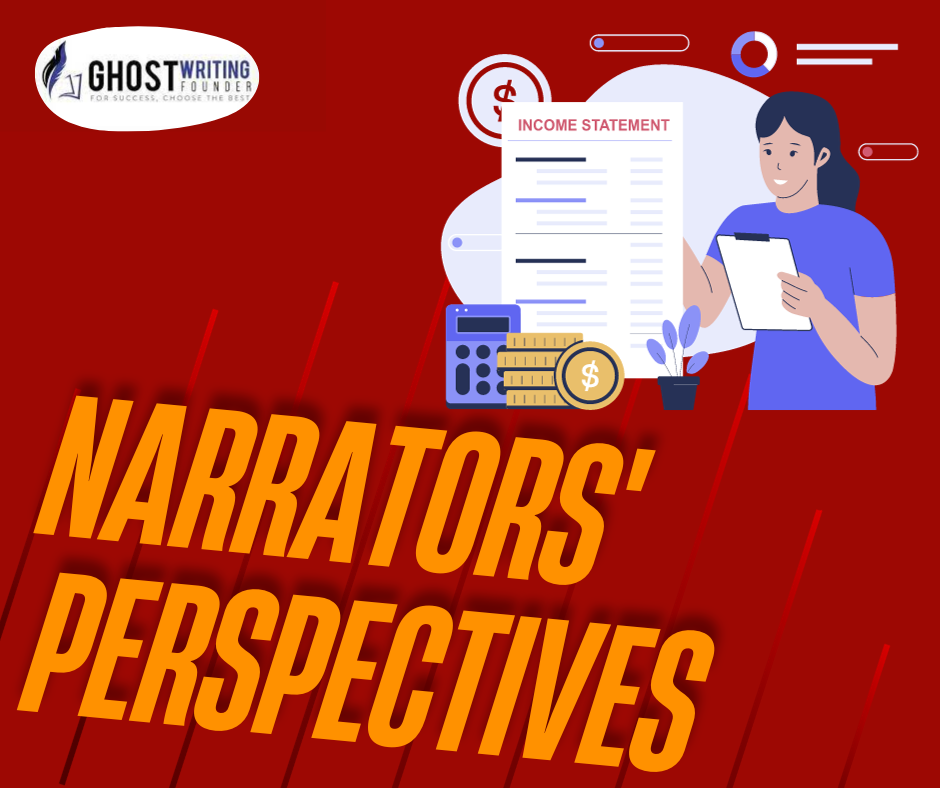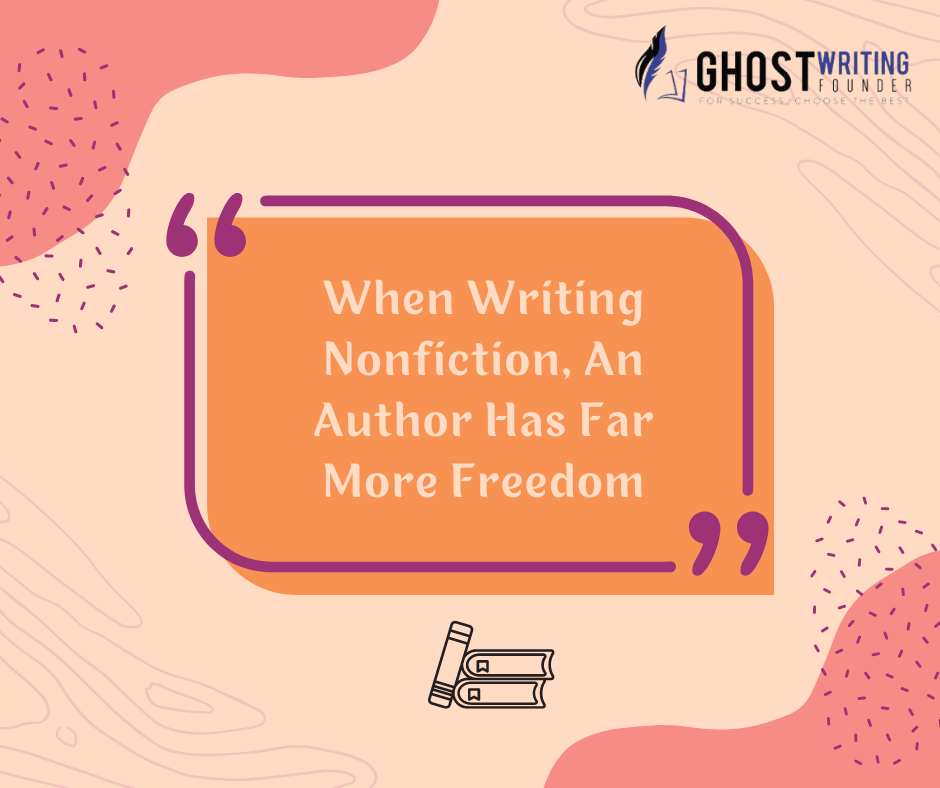
book writing
A narrator is the person who tells us a story. This voice of the book or a story is the narrator’s voice, and it doesn’t matter how loud, soft, excited, or calm it is. They’re showing us the way around the world they’re describing.
What Narrators’ Perspective
Think about how someone tells the story. They could talk about how brave a hero is or get inside the mind of a character. The narrator’s perspective is the angle or point of view from which the story is told. Narrators’ perspective changes how we understand and feel about a story. Different points of view can completely change the way a story feels, just like seeing the same scene from different angles can change how it looks.
Different Narrators’ Perspectives
First-Person
The story told from the first-person point of view is like a diary. You can tell the story from the point of view of a character by using “I” and “me.” We can see their thoughts, feelings, and events for ourselves. This point of view feels as close as your best friend telling you a secret.
Second Person
This style is one of a kind; the word “you” runs through it all. It’s like the story is talking to you directly when you read it. It’s like someone is telling you what to do or leading you somewhere. The second person is rarely used, but when it is, it forges a special connection between the story and the reader.
Third-Person Omniscient
Picture an old, wise owl watching over a forest and knowing everything that goes on. That narrator in the third person knows everything, just like that owl. They know what every figure does, how they feel, and what they think.
Third Person Limited
The story focuses on a single figure, referred to as “he” or “she.” We learn how this character feels and what they think, but we don’t learn anything about the other characters. Following the lead actor in a play and seeing everything they do means you can’t hear what other people are saying.
Third Person Objective
This narrator is like a camera that records what’s going on. They show what’s going on without getting into what people are thinking or feeling. While it gives a fair and clear picture, you might wish you could see what a character is thinking sometimes.
It’s like having different filters for a camera to understand these different narrators and their points of view. Every lens gives a different view, and picking the right one can change how the story feels as a whole.
Narrators’ Perspective and Storytelling
Changing How the Reader Sees Things
Storytelling style has a big effect on how the reader sees the world within the story. How you see things is like a camera lens. Based on what it’s focusing on, we could see a close-up of how one character is feeling or a wide shot of beautiful scenery.
One example is telling a story from the point of view of a child. This can make the world seem bigger, scarier, or even more amazing. By picking a certain point of view, the author guides the reader’s attention and makes sure they see the story in a certain way.
Getting People To Feel Something
Feelings are what make a story live. Readers may feel happy, sad, excited, or afraid, depending on how the narrator describes events. It’s like being in someone else’s shoes when we read a first-person story of their life. We can feel their happiness or sadness.
On the other hand, a third-person omniscient narrator can give a more balanced view by showing how different people feel. By looking at things from these points of view, writers can connect with their readers and make the story more powerful.
Having An Effect On The Development Of The Story
Narrators’ perspective is more than just “how” you tell a story. It’s also about “what” you tell. The narrator’s knowledge and opinions can change how the story’s events play out.
In a mystery book, for example, a first-person point of view might keep the reader guessing by only showing details as the major character finds them. In the meantime, a third-person view could give readers hints from different points of view, letting them play detective. Because of this, the chosen point of view can take the story in different directions, each of which makes for a different reading experience.
Pros And Cons Of Switching Narrators
Cons
Consistency
It’s simple to forget whose voice or point of view we’re hearing when the story jumps from one narrator to another. If you’re not careful, this can make people confused.
Overlap
Someone might say or show the same thing over and over, which could slow down the story.
Engagement
Some viewers might feel more connected to one narrator than another. Some people might lose interest when the point of view changes.
Pros
Depth
Having more than one narrator about the same event can give readers a fuller picture of what happened.
Variety
Using different narrators can keep readers interested by giving the story a new twist.
Character Development
By letting different people tell the story, we learn more about their feelings, thoughts, and goals.
Ways To Make Sure Transitions Go Well
Clear Signposting
When you switch narrators, start a new chapter, or make a clear break. This space between them can tell the reader that something is changing.
Distinct Voices
Each narrator should have their own style. This makes it easy for readers to figure out who is speaking right away.
Limit Frequency
It can be hard to adjust to too many changes. To make sure readers can keep up, don’t use too many changes.
Links Between The Stories
Make sure that the end of one narrator’s part flows into the beginning of the next one. This makes the reading experience smooth.
Professionals
In case you are not confident that you are doing right. The best and, in fact, safest option is concerning Ghostwriting Founder and getting everything right.
Main Attributes and Elaborate Information
| Aspect | Details | Examples/Types |
|---|---|---|
| Narrators’ Perspective | The angle or point of view from which the story is told. Affects how the story is understood. | First-Person, Second Person, Third-Person (Omniscient, Limited, Objective) |
| First-Person | Story is told from the character’s POV using “I” and “me.” Close and intimate narrative. | Diary-like, personal experiences. |
| Second Person | Unique style using “you,” creating a direct connection with the reader. | Direct address, guiding the reader. |
| Third-Person Omniscient | Narrator knows everything about all characters. Like an all-seeing owl. | Broad, all-encompassing viewpoint. |
| Third Person Limited | Focuses on one character, using “he” or “she.” Limited to one character’s perspective. | Focused, single-character viewpoint. |
| Third Person Objective | Narrator presents events without inner thoughts or feelings. Like a recording camera. | Objective, factual narration. |
| Impact on Storytelling | Narrator’s perspective influences reader’s perception, emotions, and story development. | Varies based on chosen POV. |
| Pros and Cons of Switching Narrators | Pros: Depth, Variety, Character Development. Cons: Consistency, Overlap, Engagement. | Depends on narrative technique. |
| Transition Techniques | Clear Signposting, Distinct Voices, Limit Frequency, Links Between Stories. | Ensures smooth narrative flow. |
| Conclusion | The choice of narrator’s perspective is crucial in storytelling, affecting reader engagement. | Importance of skillful POV selection. |
Conclusion
Storytellers are just as important as the stories they tell. The point of the Narrators’ Perspective has a big impact on how we understand a story. Storytellers can make stories that connect with readers on many levels by learning about the pros and cons of switching between different narrators and using techniques to make the switch go smoothly. The skill of picking and switching between narrators shows how much viewpoint affects the art of telling stories.









Leave a Reply